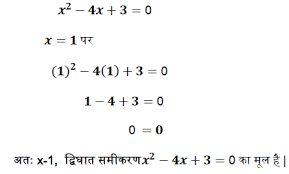The journey of mastering mathematical concepts can often be a formidable challenge, especially when it involves learning in a language other than one’s mother tongue. For students engaging with the quadratic equation in Hindi, interactive resources in their native language can be particularly advantageous, making the learning experience more engaging and effective. This article aims to demystify the process of learning and teaching this fundamental aspect of algebra in the Hindi language.
Integrating Cultural Nuances in Mathematical Learning
A pivotal aspect of effective learning is the integration of cultural context. For students who converse in Hindi, aligning mathematical concepts with familiar cultural references can immensely aid in their comprehension. By weaving examples from daily life, traditional tales, or common situations into the study of quadratic equations, learners can find these abstract concepts more relatable and easier to decode. Additionally, using culturally relevant analogies and examples helps in breaking down complex concepts into more digestible segments. This approach also promotes a sense of familiarity and comfort, encouraging students to engage more deeply with the subject matter.
The Power of Visual Representation
Language may pose barriers, but visual tools speak universally. In mathematics, visual aids like graphs, diagrams, and charts become indispensable, particularly in the representation of quadratic equations. These tools break down complex ideas into understandable segments, aiding Hindi-speaking students in gaining a more concrete grasp of the subject. Furthermore, incorporating culturally familiar visual elements can make these tools even more effective. Teachers and educators can create custom visual aids that resonate with the cultural experiences of their students, making abstract concepts like quadratic equations more accessible and less intimidating.
Leveraging Interactive Techniques for Enhanced Understanding
Interactive learning methods, including online quizzes, digital textbooks, and educational applications, are significantly beneficial in grasping complex subjects. These platforms often provide immediate feedback, a feature that is crucial for learners to identify and rectify their mistakes promptly. Additionally, these interactive platforms can adapt to the individual learning pace of each student, providing a personalised learning experience. This adaptability is especially important in subjects like mathematics where learners may progress at different rates.
Collaborative Learning: The Strength of Collective Wisdom
Learning in groups or with peers can be incredibly effective, especially in understanding intricate topics like quadratic equations. Group study sessions, discussion forums, and peer tutoring in Hindi enable learners to share insights, solve problems collaboratively, and learn from each other’s perspectives. This collective approach not only enhances understanding but also builds a supportive learning community. It creates an environment where students can openly discuss and clarify doubts, fostering a deeper and more comprehensive understanding of quadratic equations. Moreover, peer-to-peer teaching in one’s native language can solidify knowledge, as explaining concepts to others is a powerful way to reinforce one’s own learning.
Tailoring Teaching Methods for Hindi Speakers
Every learner has a unique style of absorbing information. For Hindi speakers, teaching methods that align with their linguistic preferences can make a significant difference. Educators should consider using bilingual resources, where complex mathematical terminology is explained in both native language and English. This bilingual approach ensures that students are updated with global mathematical standards and comfortable in their linguistic domain. By doing so, educators can ensure that language does not become a barrier to understanding, but rather a bridge to greater knowledge. Additionally, incorporating stories or examples from native literature and folklore can make the learning experience more engaging and culturally enriching.
In conclusion, the quadratic equation in Hindi can be challenging, but with the right techniques and approaches, it becomes a manageable and enjoyable subject to explore. By integrating cultural context, leveraging visual aids, engaging in interactive learning, collaborating with peers, and tailoring teaching methods to fit linguistic needs, Hindi-speaking students can acquire a solid grasp of quadratic equations. These strategies simplify the learning process and ensure that students gain a comprehensive and lasting understanding of the subject.

As the editor of the blog, She curate insightful content that sparks curiosity and fosters learning. With a passion for storytelling and a keen eye for detail, she strive to bring diverse perspectives and engaging narratives to readers, ensuring every piece informs, inspires, and enriches.










